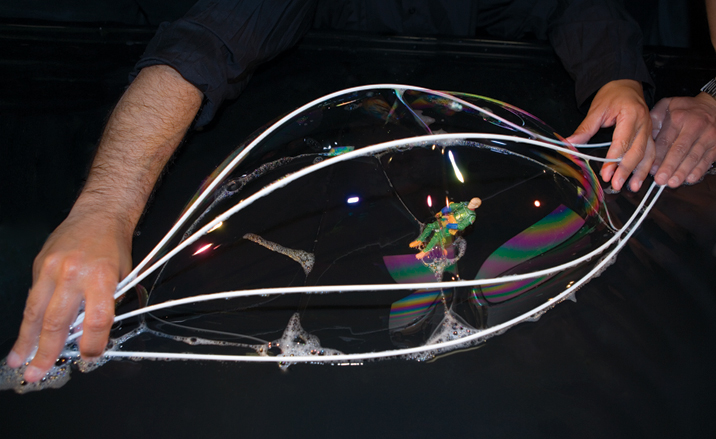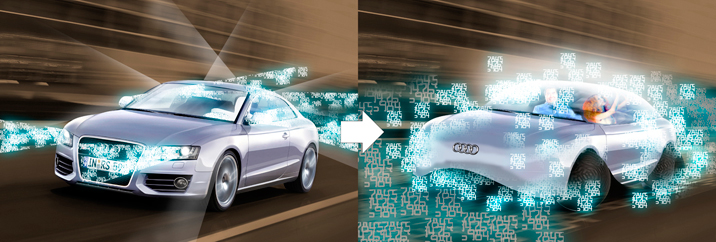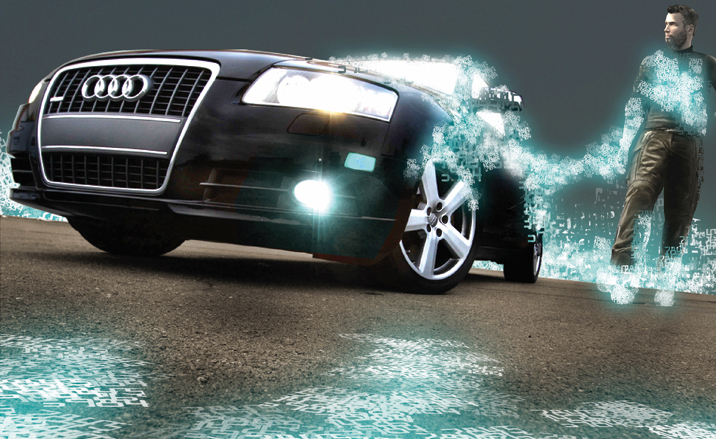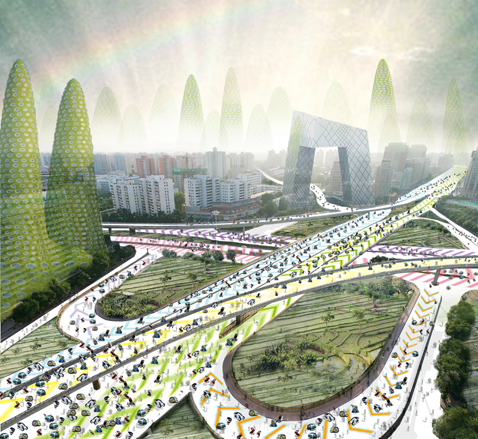Audi Urban Future Award: Building a vision - 2030

Cars and architecture are going to have to get to know one another rather better. Truly green mobility will depend on a massive supportive infrastructure in order to realise its full potential; charge points, specialist filling stations, more space efficient parking, intersection with public transport, congestion charging, etc. With all this in mind, Audi has taken the initiative and asked six international architects to conceive a city landscape for 2030 to examine how urban planning and architecture will change to embrace sustainable mobility.
The German marque hopes the findings will help shape its eco vision (as well as allow it to steal a march on its rivals). 'For me cars are like urban furniture,' head of Audi Group Design Wolfgang Egger told us following the initial presentations at the Royal Institute of British Architects in London. 'What we as car designers would like to find out is how to continue with individual mobility in a future urban environment.'
The architects involved are a well picked mix of practices from around the world -- Wallpaper* favourites all - including Alison Brooks Architects (London), BIG (Copenhagen), Cloud 9 (Barcelona), Diller Scofidio + Renfro (New York), J. Mayer H. Architects (Berlin) and Standardarchitecture (Beijing).
Independently, the dominant theme is the integration of personal mobility with public and shared transport, with a notable emphasis on exploring sophisticated information technology systems to expand on the role of the car. BIG conceives of a future city dominated by automated mobility - the driverless car changing the dynamics of the urban space. Founder Bjarke Ingels had this to say: 'The driverless car will change not only the way we utilise our existing physical environment, but how we plan for new urban life forms. Urban space and urban movement co-evolve in a constant feedback loop where each part is evolving to adjust to the other.'
Alison Brooks suggests downsizing the car to reclaim urban land taken up by roads and parking. 'Defuse vehicles around buildings like movable pods and use energy-producing buildings as power sources.' She also proposes personalised removable control systems so that the vehicle becomes a mobile architectural space.
Berlin firm J. Mayer H clearly had a similar vision. Jurgen Mayer told us: 'Individual mobility of the future will strongly be linked to the developments of digitally augmented urban spaces, automated driving and personalised data exchange between the human body and its environment.'
Standardarchitecture is focusing on how Beijing might appear in 2030. The firm has divided the city into two, with controlled interior and exterior mobility. Outside electric cars will be the primary means of travel, inside electric cycles and 'Audi Bubbles' - a small personally adapted space that travels on and between the travel belts. All this will coexist alongside a supporting metro system. 'New patterns of urbanisation will change our concept of mobility, and the change in our mobility concept will drastically change the future of the city,' Standardarchitecture founder Zhang Ke told us.
Receive our daily digest of inspiration, escapism and design stories from around the world direct to your inbox.
Cloud 9, for instance, set out to design its own concept car. Called Barcelona's Empathic Car it absorbs energy from various sources including a possible crash. The founder of the Barcelona practice, Enric Ruiz-Geli, explained: 'We would like to imagine a soft skin with photovoltaic dots which contribute to the energy production.'
Audi board member Rupert Stadler thought it interesting that most of the architects addressed personal mobility, confirming for him that the car as an object is here to stay. Following the presentation, he told us that the marque has no plans for a zero-emission sub brand but that the next stage for Audi will be small volume electric vehicles under the e-tron badge. He explained: 'We are branding the technology for electric driving as e-tron -- a bit like we did with the quattro.'
The six architects have now entered phase two. Audi will award the winner €100,000, to be presented in August at the 12th International Architecture Exhibition at the Venice Biennale, where each practice will produce an installation that represents their concept of a transformed reality.

Alison Brooks suggests downsizing the car to reclaim urban land taken up by roads...

.. and parking by taking personal micro cars up elevators, or plugging them onto the sides of houses

Cloud 9 worked with eight to 10-year-olds in a workshop for the Barcelona’s Empathic Car project

Cloud 9 was inspired by Media ICT, a bubble building where a membrane protects the building from the sun’s radiation

A.Way by Jurgen Mayer H.

According to J. Mayer. H, individual future mobility will be linked to the developments of digitally augmented urban spaces, automated driving and personalised data exchange between the human body and its environment...

Traffic will be a constant flow, with no more need for parked vehicles

Standardarchitecture’s vision for Beijing in 2030 divides the city into interior and exterior mobility...

... Outside, electric cars will be the primary means of travel, whereas on and within the travel belts, electric cycles and ‘Audi Bubbles’ will be the forms of mobility, coexisting with the old supporting metro

Audi Bubbles are small personally adapted spaces that travel on and between the travel belts
A writer and editor based in London, Nargess contributes to various international publications on all aspects of culture. She is editorial director on Voices, a US publication on wine, and has authored a few lifestyle books, including The Life Negroni.
-
 Is the Calibri typeface 'woke'? We asked its designer
Is the Calibri typeface 'woke'? We asked its designer'It's more a compliment than something bad for me,’ says the Dutch type designer Lucas de Groot
-
 The Wallpaper* Design Awards are back in 2026 – see who's shortlisted
The Wallpaper* Design Awards are back in 2026 – see who's shortlistedOur annual design awards returns in January – here are the first shortlisted nominees
-
 RIBA House of the Year 2025 is a ‘rare mixture of sensitivity and boldness’
RIBA House of the Year 2025 is a ‘rare mixture of sensitivity and boldness’Topping the list of seven shortlisted homes, Izat Arundell’s Hebridean self-build – named Caochan na Creige – is announced as the RIBA House of the Year 2025
-
 The Audi Concept C strives for clarity, drawing on the past to present a new face for the future
The Audi Concept C strives for clarity, drawing on the past to present a new face for the futureLaunched this month in Milan, the Audi Concept C is a reboot of both design language and visual identity for the German manufacturer
-
 How design defined Audi: the brand celebrates 60 years with a collection of its greatest hits
How design defined Audi: the brand celebrates 60 years with a collection of its greatest hitsA fleet of iconic Audis, the flowing lines of Frank Gehry’s architecture and the open roads of Northern Spain made for a design-rich experience
-
 Audi launches AUDI, a China-only sub-brand, with a handsome new EV concept
Audi launches AUDI, a China-only sub-brand, with a handsome new EV conceptThe AUDI E previews a new range of China-specific electric vehicles from the German carmaker’s new local sub-brand
-
 We take Audi’s new Q6 e-tron quattro around and across the fjords of Norway
We take Audi’s new Q6 e-tron quattro around and across the fjords of NorwayThe new Audi Q6 e-tron quattro is a pure EV that marks a new design direction for the German brand, setting new tech standards along the way. Transportation Editor, Jonathan Bell, takes it for a drive
-
 A deep dive into the new Audi Q6 e-tron, revealed at Milan Design Week 2024
A deep dive into the new Audi Q6 e-tron, revealed at Milan Design Week 2024The Audi Q6 e-tron is the brand's latest all-electric car, a stylish powerhouse launched at Audi’s House of Progress in Milan
-
 Coming soon: a curated collection of all the new EVs and hybrids that matter
Coming soon: a curated collection of all the new EVs and hybrids that matterWe've rounded up new and updated offerings from Audi, Porsche, Ineos, Mini and more to keep tabs on the shifting sands of the mainstream car market
-
 Farewell to the Audi TT, a design icon that evolved with the automotive landscape
Farewell to the Audi TT, a design icon that evolved with the automotive landscapeFor over 25 years, the Audi TT has been synonymous with the brand, a modern machine that initially favoured style over sport. The final editions are very different beasts to the original
-
 Audi RS6 Avant GT is an estate car that thinks it belongs on the track
Audi RS6 Avant GT is an estate car that thinks it belongs on the trackWith the Audi RS6 Avant GT limited-edition supercar, Audi Sport has gone all-out to create the ultimate hyper-estate